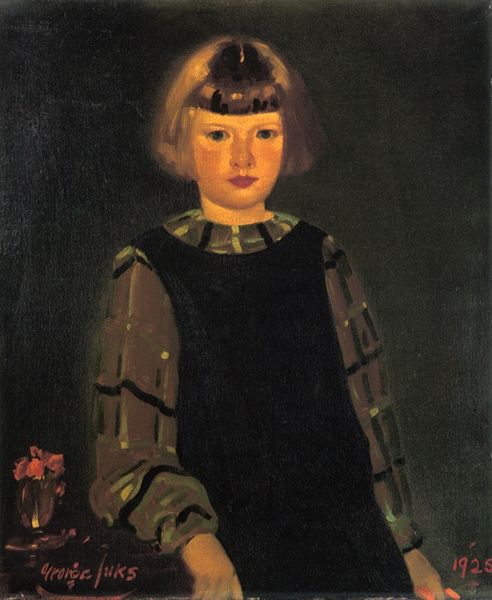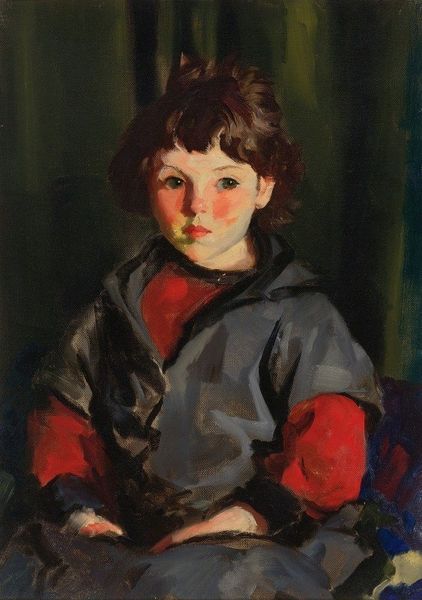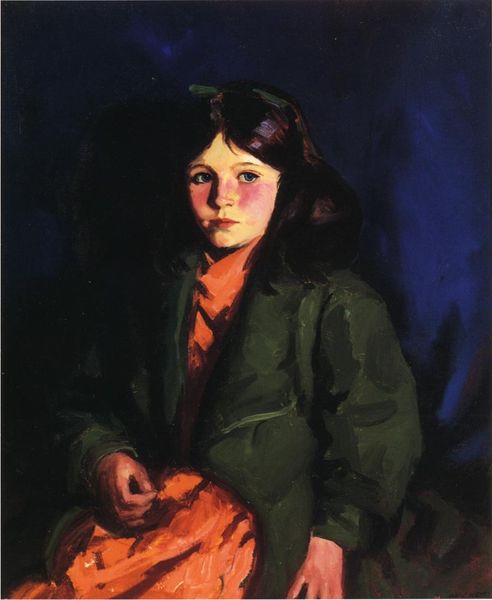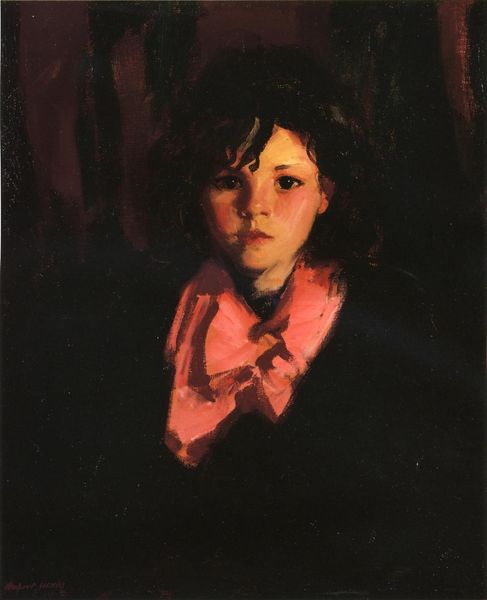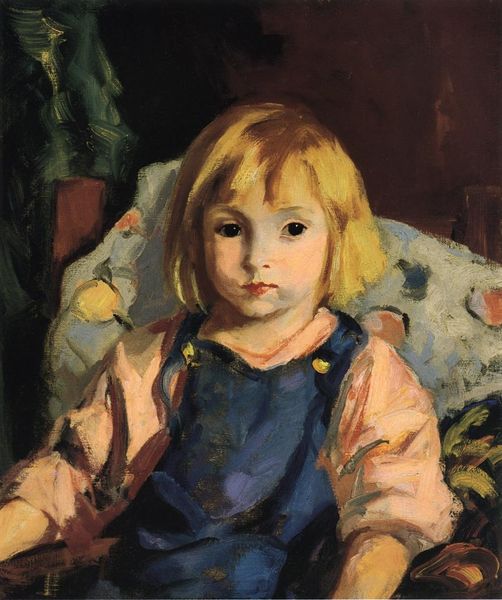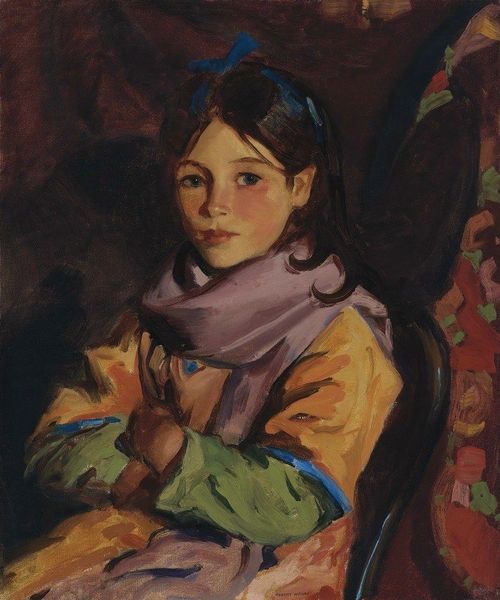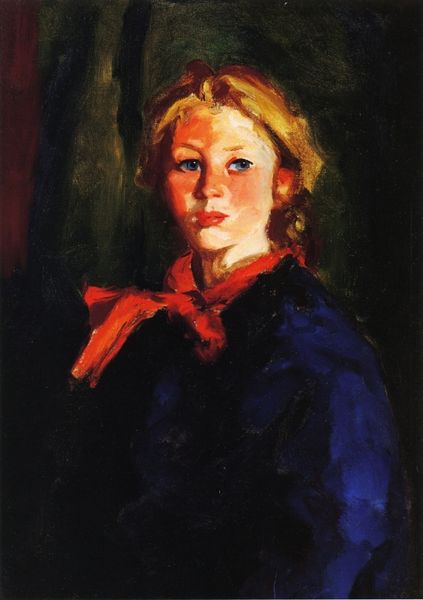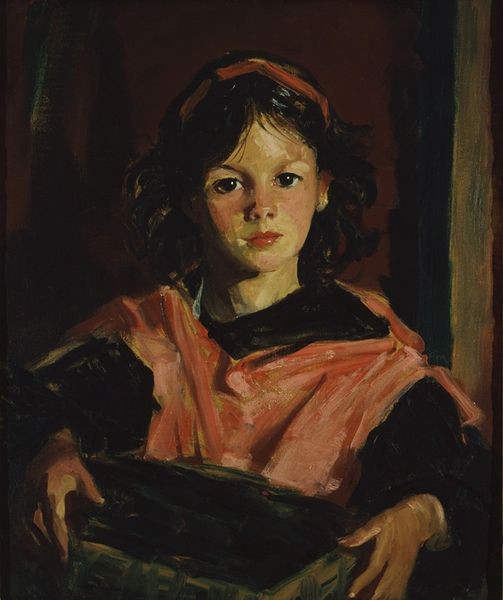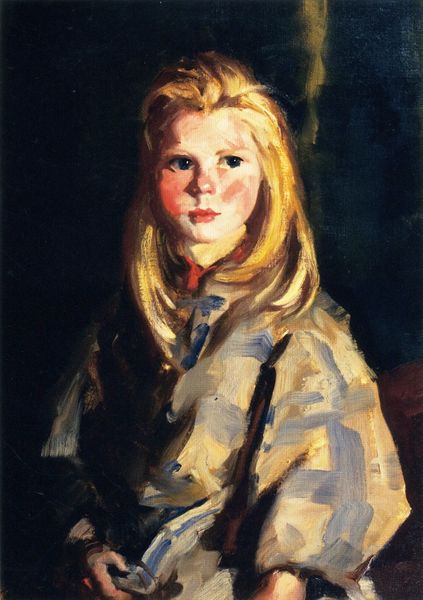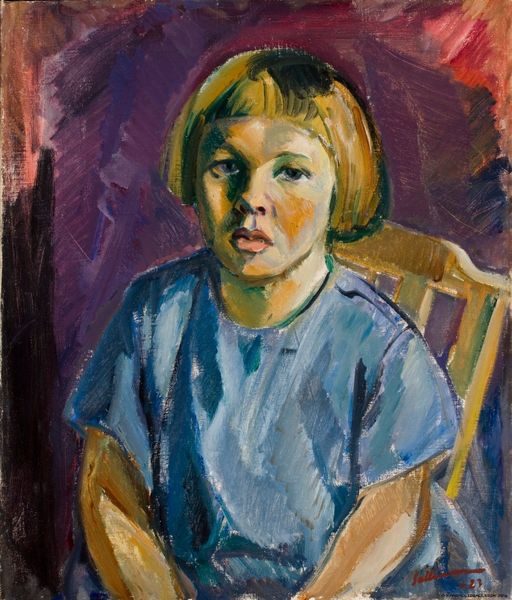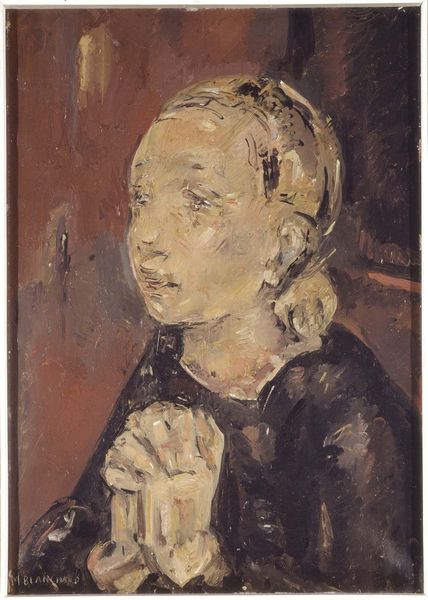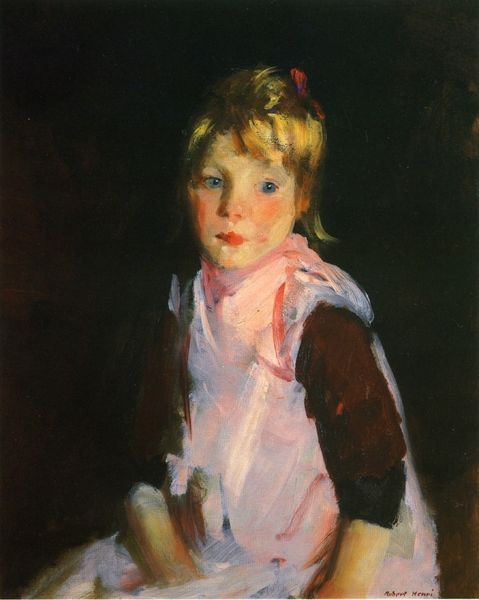
painting, oil-paint
#
portrait
#
painting
#
oil-paint
#
ashcan-school
#
genre-painting
#
realism
Copyright: Public domain
Curator: Here we have Robert Henri's "Carl," painted in 1921. An oil painting, it embodies the spirit of the Ashcan School. Editor: Gosh, that little face gets me. The kid looks a bit apprehensive, peering right out. Curator: Notice how Henri, typical of the Ashcan School, presents us with a genre painting—a glimpse of everyday life. But it's the symbols surrounding the boy that fascinate. Look at the stick he grips. To me, that stick, combined with the heavy fur-trimmed coat, hint at burdens beyond his years. Editor: Burdens, huh? I just see a kid playing dress-up, maybe with his grandpa’s things. It’s all kind of slouchy and oversized. Curator: Perhaps. The coat certainly dominates the composition, overwhelming the small figure. Symbolically, fur carries layers of meaning – status, comfort, animal instinct. Think about it within the context of the 1920s. After World War I, ideas of innocence were rapidly changing. Children were no longer just children. Editor: Wow, you see all that in a fur collar? I tend to focus on the light. It seems very intentional – how it hits the face, making those eyes the focal point. He's vulnerable. I think the artist felt tenderness toward him. It could be anybody’s Carl. Curator: Exactly. Henri was invested in portraying not just likeness, but also something essential, something archetypal. Do you see any archetypes present? I do... the little man thrust into maturity. Editor: Hmm, it's compelling to think of archetypes, but honestly, I see vulnerability, more than world-weariness. Curator: It's that very tension – the push and pull – between perceived innocence and societal weight that makes this piece so powerful. Editor: It reminds me how fleeting these moments are and that someday all of us grow out of the image shown. Well, that certainly gives you something to think about, doesn't it?
Comments
No comments
Be the first to comment and join the conversation on the ultimate creative platform.
